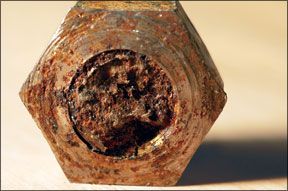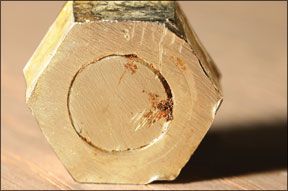In my search for my familys elusive “next boat,” Ive spent the last few weeks exploring the pile of wrecked dreams left behind by hurricanes Dennis, Charlie, Katrina, and Wilma. Its been instructive, to say the least. Even those boats that 288 escaped the storms reveal a variety of serious problems that plague even the best old boats. A good surveyor and savvy owner will spot these warts, but theyre worth reiterating here. Deck core rot
Sagging mast step:
Check for a concave deck below deck-stepped masts, or
288
corrosion at the base of a keel-stepped mast. Either can lead to more serious problems, like complete rig failure.
Fractured chainplate
: Even if the chainplate, its bolts and backing plates appear intact, the bulkheads to which they are attached may no longer be tabbed to the hull, or may be rotten.Seeping hull-deck joint:
Many boats have outlasted the sealant or fasteners particularly aluminum rivets that join the hull and deck. At best youve got soggy lockers, at worst the hull flexes like Gumby.“Floating” bulkheads
: Many poorly bonded interior liners and bulkheads have simply worked loose over time, and some owners have exacerbated this by modifying the interior to fit new systems or expand storage space. As the newly liberated hull flexes in a seaway, an assortment of exciting new problems will arise.Aging systems
: Aluminum fuel tanks (particularly in the bilge), plumbing fittings (the number of gate valves still in use is astounding), and electrical wiring on 20-year-old boats usually need attention. All but the best-loved Atomic 4 engines and old raw-water-cooled diesels are usually due for a rebuild.For a prospective buyer, or the owner of an old boat, this very abbreviated list of potential woes might seem daunting. It need not be. There are bargain boats to be had and cures for what ails them. Were here to help find them. Our special report on marine metals (“
Keep a Close Watch on Marine Metals,” page 28) kicks off a series of stories well run this year covering the problems that plague older boats. Well also be carrying out extensive testing to uncover those products that are best for the repairs, maintenance projects, or upgrades that owners of older boats share.Now, if you don’t mind, theres a 1968 Flying Scot I thought Id take a look at, and after that, an old Brewer 44. (The shape of our next boat, it seems, is still quite foggy.)
Darrell Nicholson
Editor



































